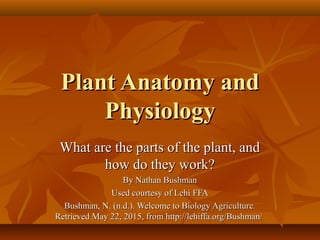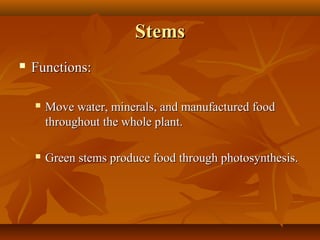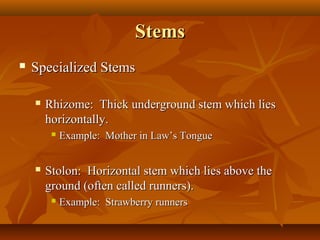The document discusses the major parts of plants including roots, stems, leaves, and flowers. It describes the functions and structures of each part. Roots absorb water and nutrients and anchor the plant. Stems transport water and nutrients and provide structure. Leaves produce food through photosynthesis. Flowers facilitate sexual reproduction through pollination and fertilization. The document provides details on plant anatomy and physiology.


























































